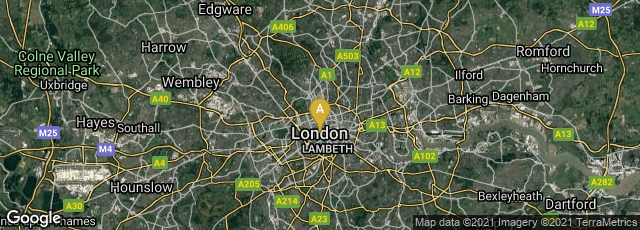In his introduction dated 1827 Babbage indicated that the book was printed on the presses of Augustus Applegath; in the footnote Babbage referenced the recent acquisition by William Clowes of Applegath's premises and printing machines that appears to have occurred between the time of printing the tables and the time of printing the introduction. As a technologist it is likely that Babbage would have sought out Applegath in order to have his book printed on the latest printing machine. The third edition of Babbage's book photographed here was published by Charles Knight, a great exponent of machine printing, and one of Clowes's major customers.


A: London, England, United Kingdom
Until the development of inexpensive hand-held electronic calculators in the 1960s, printed mathematical tables in book form were the most wide used aids to computation. Because they were computed by hand, and extremely difficult to proof-read accurately, by the early 19th century especially, these tables tended to be rife with errors, resulting in the perpetuation of mistakes when information they contained was applied.
To improve the accuracy of mathematical tables, about 1820 Charles Babbage designed his Difference Engine No. 1 to mechanize production of mathematical tables, and to typeset their results directly into stereotype plates. Babbage recognized that once accurate data was locked into the stereotype plates and printed, errors typically resulting from mistakes in typesetting and proofreading would be eliminated. However, when he undertook the production of these tables in 1826 Babbage had only a small model of the Difference Engine No. 1. Babbage did not have a working portion of the Difference Engine No. 1 until 1832, and that was insufficient to compute full mathematical tables.
Because of his inability to mechanize table production Babbage did not attempt to compute new tables. Instead, to assure the greatest accuracy possible, Babbage had the proofs of his tables checked a total of nine times against the tables of Callet, Hutton, Vega, Briggs, Gardiner, and Taylor, with the result that only nine errors were found in the first edition of Babbage's Table of Logarithms of the Natural Numbers from 1 to 108000 (London: J. Mawman, 1827). These errors, printed as errata at the end of the preface to the first edition, were corrected in the second edition of 1831, and no further errors were found in the tables in any of the numerous later editions.
The images are from the third edition published in London in 1834 by Charles Knight, who was also publisher of Babbage's Economy of Machinery and Manufactures. The third edition was printed by Wm Clowes & Sons, early adopters of printing machines for book production. In the introduction to the first edition Babbage indicates that the mathematical tables were printed on the press of machine press inventor and builder Augustus Applegath. A footnote on that page of the introduction relates that Clowes had taken over Applegath's premises and machines by the time the edition was printed. Though we cannot be certain that Applegath printed Babbage's book on a machine rather than a hand press, as an inventor of printing machines Applegath is likely to have preferred them over slower equipment, and as a technologist Babbage is likely to have wanted his book printed on the latest machinery. Babbage's introduction was reprinted from the same stereotype plates in the third and later editions.
To insure maximum legibility and ease of use, Babbage gave careful consideration to the tables' typography and paper color, printing several test sheets on different colors of paper to discover which was least fatiguing to the eye. The first edition (1827) was printed on yellow-tinted paper, as were some copies of the third edition; other copies of the third edition were printed on green-tinted paper. Editions of Babbage's tables were published from stereotype plates as late as 1889.
Though Babbage is remembered today primarily for his visionary designs for the Difference Engine Nos. 1 and 2, and for his conception of the first programmable general purpose computer, the Analytical Engine, except for a small portion of the Difference Engine No. 1, Babbage's machines were not built in the 19th century. Ironically, Babbage's most widely used computational device was his edition of mathematical tables. Hook & Norman, Origins of Cyberspace 50. Martin Campbell-Kelly, "Charles Babbage's Table of Logarithms (1827)". University of Warwick. Department of Computer Science. CS-RR-106.